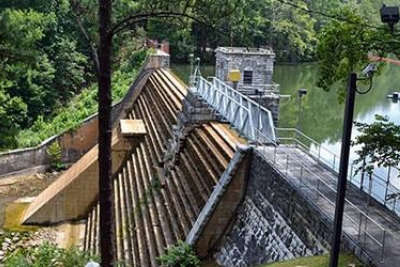
RESEARCHERS STUDY EFFECTS OF LAKE PURDY DAM ON CRAYFISHES POPULATION
Submitted by BWWB on Tue, 12/22/2020 – 13:24
Re-Post from BWWB.org
Date: 12-01-2020
Category: Water
Alabama has the most diverse crayfish fauna in the world, with more than 90 native species found in the state. Crayfishes, also known as crawfish or crawdaddies depending on where you were raised, play an important role in stream ecosystems by breaking down plant materials, digging burrows that are sometimes used by other stream animals, and serving as prey for numerous animals, especially some game fishes such as bass and catfish, and predators to others.
However, crayfish populations are declining worldwide, with 48% of North American crayfish species imperiled. Despite their importance, no previous study has examined the impacts of large dams on crayfishes. Dams and their impoundments change stream habitats and block movements of stream organisms, which subsequently changes the species present within the stream and isolates stream populations.
“Lake Purdy Dam is essential to supplying the people living in Birmingham with water. Nonetheless, we must understand how it is impacting stream animals so that we are able to use this valuable resource without losing the amazing stream diversity within the Cahaba River drainage,” said Dr. Zanethia Barnett, Research Fisheries Biologist at United States Department of Agriculture (USDA) Forest Service.
Dr. Barnett led a team of USDA Forest Service and University of Mississippi researchers who studied the crayfish populations, including diversity, density, and migration patterns, in the Little Cahaba River, where a dam creates Lake Purdy Dam and Shades Creek, which has no dam.
The scientists collected a greater variety and volume of crayfish upstream of Lake Purdy on the Little Cahaba River, while fewer crayfish and less diversity of species found downstream of the dam and none were found immediately below the dam. Meanwhile, crayfish density was 30% greater in downstream sections of Shades Creek than downstream of Lake Purdy Dam.
In addition, the team noted that the Little Cahaba River had more stable flow and temperature when compared to Shades Creek, which can decrease the diversity of crayfishes.
“Because the timing of extreme high and low flow events are normally seasonal, crayfishes have synchronized their life history events, such as timing of mating, with a stream’s natural flow and temperature regimes,” said Dr. Barnett. “Thus, decreasing the variability of stream flow and temperature, as well as the timing of maximum and minimum events, can impact key life history events for crayfishes. This often decreases the abundance of native crayfish species who are adapted to natural conditions, sometimes eliminating specialized species.”
Based on their research, the team discovered that Lake Purdy Dam prevented crayfish upstream of the dam from moving to stream sections downstream and vice versa, reducing gene flow, or the movement and mating of crayfishes, between upstream and downstream populations. The lack of gene flow isolates crayfish populations and increases their risk of local extinction. Conversely, crayfish moved freely throughout Shades Creek, with high gene flow between both sections.
“Conservation strategies focused on connecting crayfish populations up- and downstream of Lake Purdy – such as moving crayfish from downstream of the dam to upstream or building fish ladders – may help prevent the reduction and loss of crayfish populations,” said Dr. Barnett.
The team concluded that managing streams to mimic natural flow regimes and releasing water at similar stream temperatures may help maintain diverse stream communities. There were also more crayfish predators, such as bass, downstream than upstream of the Lake Purdy Dam, as well as more crayfish predators downstream of Lake Purdy than in Shades Creek, which was also correlated to lower crayfish abundance and diversity.
“There is still much to learn about the effects dams have on crayfishes, but it is clear that changes to stream ecosystems by dams have major consequences on crayfishes,” said Dr. Barnett. “We would like to thank Birmingham Water Works and the many landowners for allowing us to access streams through their property. This study could not have been conducted without them!”

Recent Comments